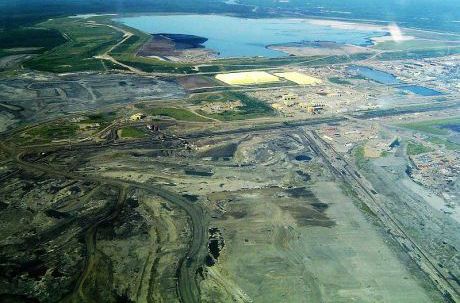News
You are here
The Tar Sands are dumping cancer-causing pollution in lakes

January 28, 2013
The Tar sands are polluting lakes as far as 90 km away from mining sites. A joint study published by scientists at Queen’s University in Kingston and Environment Canada found cancer-causing chemicals from the Tar Sands in six lakes.
The study focused on the transport of polycyclic aromatic hydrocarbons (PAHs), one of the many toxins present in the tar sands. PAHs are cancer-causing chemicals that are released through burning of fossil fuels: coal, oil, tar. Scientists examined core samples taken from the sediments at the bottom of six lakes – five just outside of Fort McMurray, and Namur Lake which is 90km from the city.
While there are PAHs that occur naturally as the result of forest fires, volcanic activity and geologic deposits, those related to burning petroleum in tar sands production have a unique signature. The PAHs studied in the lakes’s core samples had this signature, allowing scientists to trace them back to the source.
The core samples show that PAH levels in all of the lakes have increased two to 23 times over the background levels seen in the early 1960s prior to development of the tar sands. The PAHs are carried as air pollution and are deposited into the lakes where they settle to the bottom. According to John Smol, one of the authors and biologist at Queen’s University, these once pristine lakes now have a chemical composition similar to lakes near urban centres. The lead author of the study, environmental scientist Joshua Kurek of Queen’s University, says that the signature of the PAHs in the core samples and the timing strongly suggest that development and refining of the tar sands has played a role in the increase of PAHs in the lakes.
Production from the tar sands is expected to double by 2020, making it inevitable that levels of pollution will also increase. PAHs are absorbed by fish and birds, and can be passed up the food chain to humans. However, the long term ecological effects of the pollution are not yet known. Algae and zooplankton populations seem to be showing no effects so far, although there have been noticeable decreases in fish populations in some streams.
In February 2012 the federal government announced a three-year water monitoring program in the tar sands region, the results of which will be made public for independent investigation. Yet the lack of baseline data from the water monitoring program and the spread of PAH pollution has not stopped serious consideration of 11 proposals to expand tar sands mining operations.
With the Harper government’s recent gutting of environmental legislation – the majority of freshwater lakes and streams are no longer protected or monitored – water ecologist Dr David Schindler says that more tar sands expansions should not be approved until comprehensive transparent monitoring systems are in place.
Cancer-causing pollution is just the latest in the long list of reasons to shut down the Tar Sands and create the industries that will produce clean renewable energy sources.
Section:
Topics:










